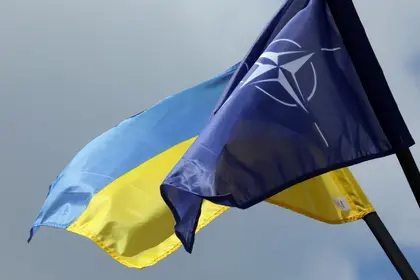Poland continues to prepare its citizens for war with Russia

Poland has seen what has happened to its Ukrainian neighbour since Russia’s large-scale invasion and has no intention of being caught off guard like Kyiv.
Even before the start of Russia’s war of aggression against Ukraine in February 2022, Poland had decided to modernize and rearm its armed forces. However, this process only really gained momentum after the invasion: Warsaw declared that it wanted to build the largest and best-equipped armed forces in Europe by 2035.
Join us via Telegram
Follow our coverage of the war on @Kyivpost_official.
According to an article published in September by the Centre for European Policy Analysis (CEPA), Poland already spent 2.4 percent of its GDP on defence, but decided to increase this amount to four percent by 2023. More than 50 percent of this will be spent on weapons and equipment.
The country plans to double its land force to 300,000 troops, along with massive purchases of equipment, including 366 Abrams tanks and 96 Apache attack helicopters, 980 K2 tanks and 648 self-propelled howitzers from South Korea, hundreds of American HIMARS missile launchers, a large number of Patriot air defense systems, 22 British-made anti-aircraft batteries and three British-designed frigates, as well as 48 South Korean FA-50 fighter jets and 32 American F-35 aircraft to complement its existing fleet of 48 F-16s.
Not only will its armed forces be better prepared, Warsaw has also announced plans to physically strengthen its borders with Belarus and Russia – a strategy it calls the “Eastern Shield” and for which it has allocated 10 billion zlotys ($2.5 billion) over five years.

Other interesting topics
Why NATO should send civilian ground troops and what they could learn from it
NATO’s advantage over a possible Russian attempt to undermine Europe is only on paper. Ukraine offers an opportunity to learn what is necessary for its survival.
In March, the government announced new laws to improve Poland’s ability to protect its citizens, including increased funding for first aid training, improved public warning systems and the construction of additional emergency shelters.
The Polish population seems to be enthusiastic about the proposals of their politicians and is learning to defend themselves.
Holidays with the army
Poland aims for its future army of 300,000 to be made up entirely of volunteers, while the current strength is around 198,000. The latest initiative to both raise awareness among citizens of the need for defense and attract potential recruits to the armed forces is a new program the Polish Armed Forces launched this summer, which they call “Holidays with the Army.”
The “holidays” take place in 70 locations across Poland, some of them near the border between Russia and Belarus. The program is open to both men and women aged 18 to 35. One training module lasts 28 days and participants receive 6,000 zloty (1.5 thousand dollars) for it.
Colonel Pavel Galazka, commander of the 18th Lomza Logistics Regiment, a unit that trains the volunteers, said: “The army wants to train as many citizens as possible. Everyone knows about the threat coming from the east.”
He said that at the end of the training, the successful volunteers would take a soldier’s oath in which they would swear to “faithfully serve the Republic of Poland… even if it cost them their lives or their blood.”
At the end of the course, recruits are given the opportunity to either report directly to a branch of the professional armed forces or the Territorial Defence Forces or to remain on standby as reservists.
Maj. Michal Tomczyk, a Defense Ministry spokesman, told AP News that Russia’s large-scale invasion of Ukraine has strengthened Poles’ desire to defend their country. He said they have planned 10,000 volunteers for the program and have received more than 11,000 applications to date.
Despite its name, the program is not a vacation. It is run as a “boot camp” so recruits know exactly what it takes to be a 21st century soldier. They wake up early and work late to learn combat and survival skills. They are confined to the base for the 28-day duration of the course.
In some of the areas used for training, you can still see remnants of Polish defense lines from the 1939 German invasion that preceded World War II. Galazka said this motivated many of the young people who volunteered for the program, reinforcing the patriotism already present through history lessons at school.
The Financial Times had previously reported on the lack of military resources in European NATO countries and their inability to quickly mobilize their armed forces in the event of a war with Russia.
Russia’s first occupation of Ukrainian territory in 2014 raised some concerns but little action was taken. The large-scale invasion has brought the Russian threat into sharp focus, particularly in the Baltic and Nordic countries. In Poland, a member of NATO and the European Union, the war is just across the border and stray Russian missiles have landed on Polish territory.
Sweden and Finland have abandoned their centuries-long neutrality and joined NATO, while some countries, such as Denmark, are considering introducing or expanding conscription for men and women.
Earlier, Rob Bauer, chairman of NATO’s Military Committee, warned alliance members in January that they must prepare for a full-scale war with Russia within the next 20 years. He warned that if hostilities broke out, large numbers of citizens would need to be mobilized and that governments must now create systems to guide and educate their citizens so that they understand that “they will play a role.”
In Warsaw the message was undoubtedly received and understood.



